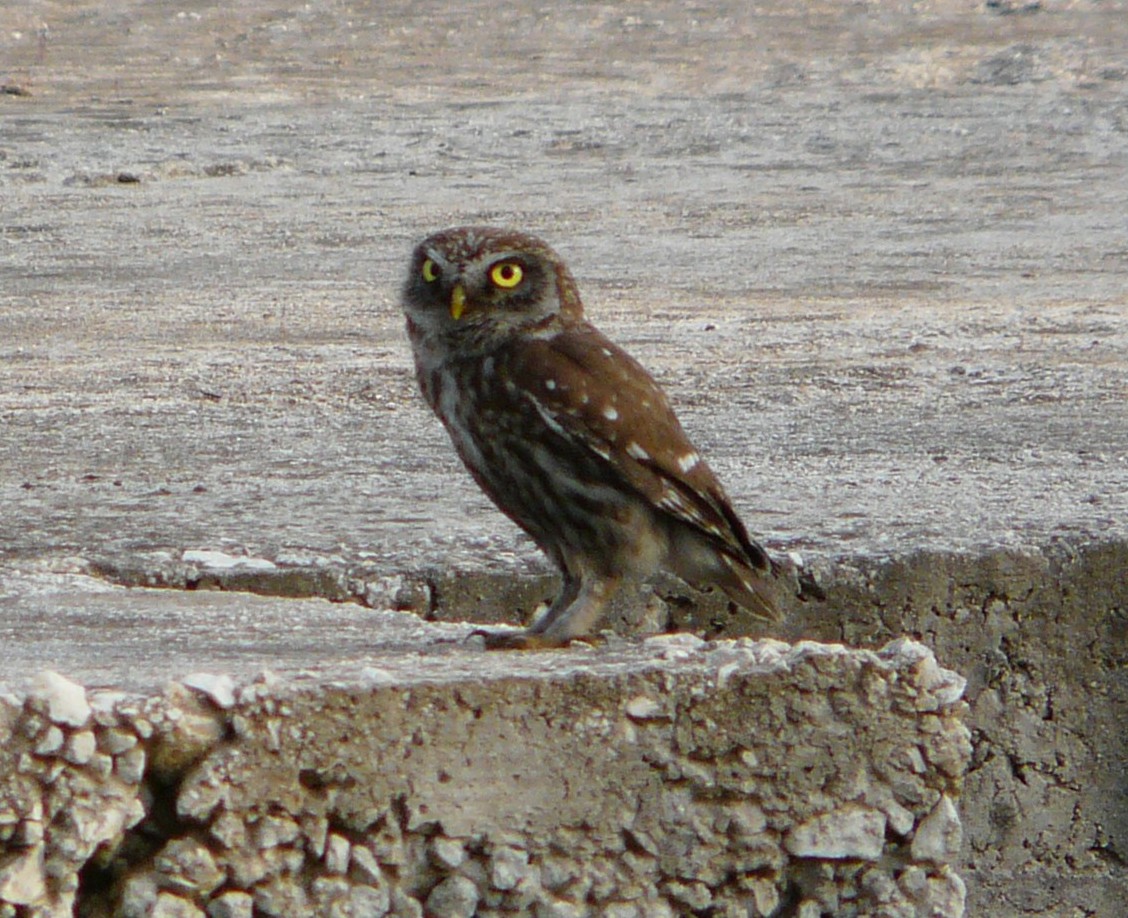Little Owl
A species of Little and Burrowing Owls and Allies, Also known as Cucumiau Scientific name : Athene noctua Genus : Little and Burrowing Owls and Allies
Little Owl, A species of Little and Burrowing Owls and Allies
Also known as:
Cucumiau
Botanical name: Athene noctua
Genus: Little and Burrowing Owls and Allies
Content
Description People often ask General Info
Description
The little owl is a small owl with a flat-topped head, a plump, compact body and a short tail. The facial disc is flattened above the eyes giving the bird a frowning expression. The plumage is greyish-brown, spotted, streaked and barred with white. The underparts are pale and streaked with darker colour. 
Size
23 cm
Life Expectancy
16 years
Nest Placement
Cavity
Feeding Habits
Little Owl is a carnivorous bird that preys on various animals including mammals, birds, amphibians, reptiles, and fish. It also consumes insects, arthropods, mollusks, worms, and crustaceans. This species exhibits adaptive hunting techniques, foraging widely for its diverse diet.
Habitat
Little Owl resides in a diverse range of semi-open habitats, from steppes and stony semi-deserts to farmlands and urban environments. This species favors areas such as open woodlands, agricultural land with hedgerows and solitary trees, and can also be spotted in parks, gardens, and near human constructions like ruins or quarries. Little Owl typically avoids dense forests and vegetation, preferring to perch on elevated structures like posts, trees, and wires. Grasslands, particularly pastures with shorter vegetation, are also preferred for hunting due to easier access to prey.
Dite type
Carnivorous
People often ask
General Info
Feeding Habits
Bird food type
Behavior
This owl usually perches in an elevated position ready to swoop down on any small creature it notices. The little owl is territorial, the male normally remaining in one territory for life. However the boundaries may expand and contract, being largest in the courtship season in spring. The home range, in which the bird actually hunts for food, varies with the type of habitat and time of year. Little owls with home-ranges that incorporate a high diversity of habitats are much smaller (< 2 ha) than those which breed in monotonous farmland (with home-ranges over 12 ha). 
Distribution Area
The distribution is widespread across Europe, Asia and North Africa. Its range in Eurasia extends from the Iberian Peninsula and Denmark eastwards to China and southwards to the Himalayas. In Africa it is present from Mauritania to Egypt, the Red Sea and Arabia. The bird has been introduced to New Zealand, and to the United Kingdom, where it has spread across much of England and the whole of Wales. 
Species Status
Not globally threatened.
